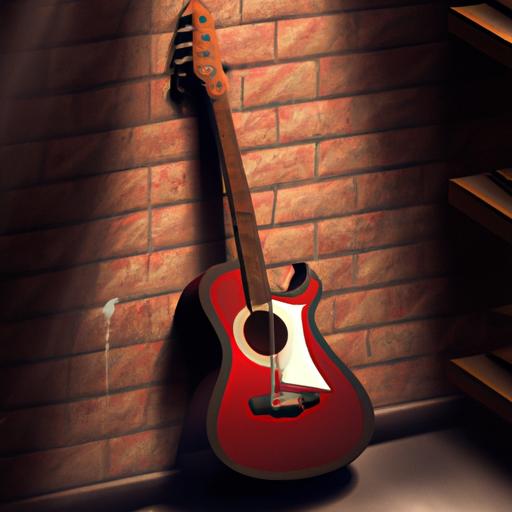Are you interested in learning the difference between a guitar and a dobro? If so, you’ve come to the right place! In this article, we’ll be exploring the history, anatomy, tuning, playing techniques, sounds, and popular genres associated with both the guitar and the dobro.
Plus, we’ll be discussing the pros and cons of each instrument, so that you can decide which one is right for you.
So, let’s get started on learning the difference between a guitar and a dobro!
Table of Contents
Short Answer
The primary difference between a guitar and a dobro is in their construction.
A guitar typically has six strings and a hollow body while a dobro has a solid body and a metal resonator cone.
The dobro is also usually tuned to an open G chord and is played with a slide for a more unique sound.
Additionally, a dobro tends to produce a richer, more resonant sound than a guitar.
History of the Guitar and Dobro
The guitar and dobro have a long and storied history, stretching back centuries and spanning different cultures and musical genres.
The guitar, for example, has its origins in ancient Greece, where it was used in songs and dances.
Over time, the guitar developed into a variety of different instruments, including steel-stringed acoustic, electric, and classical guitars.
The dobro, on the other hand, was invented in the early 20th century by John Dopyera and George Beauchamp.
It was originally designed to be an amplified version of the acoustic guitar, and was often used in bluegrass and country music.
Today, the dobro is still a popular instrument in many genres, and is often used to create unique sounds and textures.
Both the guitar and dobro have become iconic instruments, and they have been used in countless classic songs and albums.
Anatomy of the Guitar and Dobro

The guitar and dobro are both stringed instruments, but they differ in a few key ways.
The guitar is usually a six-string instrument and is typically tuned in EADGBE.
It is commonly played with a pick or fingers.
A dobro is a single-cone resonator guitar with eight strings.
It is usually tuned to an open G major chord and is usually played with a metal slide.
The anatomy of the guitar and dobro are different in several ways.
The guitar has a body made of wood, usually maple or ash, with a neck and fingerboard attached.
The strings are typically nylon or steel and the pickups used to amplify the sound are typically single-coil or humbucker.
The dobro, on the other hand, has a body made of metal, usually steel or brass, with a neck and fingerboard attached.
The strings are typically steel and the pickups used to amplify the sound are typically single-cone resonators.
The dobro’s unique sound is created by its metal resonator, which amplifies the strings and creates a distinct sound.
The bridge on the guitar is typically made of hardwood and is used to adjust the intonation of the instrument.
On the dobro, however, the bridge is usually made of metal and is used to adjust the radius of the strings.
This is important because it affects the sound of the instrument.
While the guitar and dobro are both incredibly versatile instruments, they have very different sounds and require different techniques to play.
The guitar is more suited for chords and melodies, while the dobro is better suited for slide playing and blues-style licks.
Both instruments require a good amount of practice and dedication in order to master.
Tuning the Guitar and Dobro
Tuning a guitar and dobro are two different processes, and the results are distinct.
A guitar usually has six strings and is normally tuned in EADGBE, which are the notes of the musical scale.
This tuning allows for a wide range of chords and melodies to be played on the guitar.
On the other hand, a dobro typically has eight strings and is usually tuned to an open G major chord.
This tuning creates a sound that is much more focused and has a more resonant sound.
The tuning of the dobro is also an important part of creating the instruments signature sound.
By tuning the dobro to an open G major chord, the strings interact with the metal resonator, which amplifies the strings and produces the distinct sound of the dobro.
The open G major tuning of the dobro also allows for a much more limited range of chords and melodies to be played compared to the guitar.
Playing Techniques for the Guitar and Dobro

When it comes to playing techniques, the guitar and dobro each require very different approaches.
On the guitar, the strings are usually picked or strummed with the fingers or a pick, and the instrument is often tuned in EADGBE.
This tuning allows for a wide range of chords and melodies to be played.
The dobro, on the other hand, is typically tuned to an open G major chord and is usually played with a metal slide.
This type of slide playing creates a unique sound due to the metal resonator, which amplifies the strings and gives the instrument a distinct timbre.
While the guitar can be used for both rhythm and lead playing, the dobro is usually used for lead and slide playing.
This makes it an ideal instrument for blues, country, and folk music.
The dobro also offers the ability to play intricate chords and melodies, as well as the ability to create a wide variety of effects.
Sounds of the Guitar and Dobro
When it comes to the guitar and dobro, the biggest difference is the sound they produce.
The guitar is a versatile instrument that can be used in many different genres of music, from rock and pop to classical and jazz.
It has six strings, is usually tuned in EADGBE, and is often played with a pick or fingers.
The sound of the guitar is bright and vibrant and is often used to accompany a singer or as a solo instrument.
The dobro, on the other hand, is a single-cone resonator guitar that has eight strings and is usually tuned to an open G major chord.
It is typically used in country, blues, and folk music and produces a unique sound that is created by its metal resonator.
This resonator amplifies the strings and creates a distinct sound that is both warm and mellow.
The dobro is usually played with a metal slide which helps to produce a smooth, bluesy sound.
When it comes to playing style, the guitar and dobro require different techniques.
For the guitar, picking and strumming are the most common methods of playing.
The guitar is also capable of producing various techniques such as bends, slides, and hammer-ons.
On the other hand, the dobro is usually played with a metal slide, which produces a smooth, bluesy sound.
This style of playing is often used to create a unique sound that is not possible with the guitar.
Overall, the guitar and dobro are both incredibly versatile instruments with distinct sounds and playing styles.
While they may be used in similar genres of music, they require different techniques to produce their unique sounds.
Whether you want the bright and vibrant sound of the guitar or the warm and mellow sound of the dobro, both instruments are sure to add their own unique flavor to your music.
Popular Genres for the Guitar and Dobro

From country twang to hard rock riffs, the guitar and dobro have been featured in a variety of popular music genres over the years.
The guitar has been used in a range of genres, from classic rock to jazz to heavy metal.
On the other hand, the dobro is traditionally associated with blues and country music, although it has been featured in more modern genres, such as folk and alternative rock.
The ability of the guitar to produce such a wide range of tones and sounds has made it the go-to instrument for many genres.
The guitar is capable of producing a range of tones from the twangy sound of the single-coil pickups to the heavy distortion of the humbucker.
Additionally, the guitars versatility makes it suitable for a variety of techniques, such as fingerpicking and flatpicking.
The dobro, however, is typically associated with the twangy sound of blues and country music.
Its metal resonator amplifies the strings and produces a unique sound that is often associated with these genres.
While the dobro is capable of producing a wide range of tones, its most common use is to produce a clear, ringing tone.
Additionally, the dobro is usually played with a metal slide, which adds an element of expression to the instrument.
The guitar and dobro are both incredibly versatile instruments that have been featured in a variety of genres over the years.
While the guitar is capable of producing a wide range of tones, the dobro is typically associated with the distinctive twangy sound of blues and country music.
Both instruments require different techniques to play and produce different sounds, making them great instruments for any musician.
Pros and Cons of the Guitar and Dobro
When it comes to stringed instruments, the guitar and dobro have their own pros and cons that make them unique and appealing to different players.
The guitar is perhaps the most popular stringed instrument and is used in a wide variety of musical genres, from rock and country to blues and jazz.
It is a versatile instrument that can be played in a variety of styles, from strumming chords to soloing lead lines.
The guitar is also relatively lightweight and easy to transport, making it a popular choice for musicians who travel often.
The dobro, on the other hand, is a single-cone resonator guitar with eight strings, usually tuned to an open G major chord.
Its unique sound is created by its metal resonator, which amplifies the strings and creates a distinct sound.
The dobro is a great instrument for slide guitar playing, and its sound is particularly suited for blues and country music.
It is a bit heavier than a guitar, and its size can make it a bit more difficult to transport.
When it comes to choosing between a guitar and a dobro, the choice may come down to personal preference.
The guitar is a perfect choice for those who want to play a variety of styles, while the dobro is great for those who want to specialize in slide guitar playing.
Ultimately, both instruments are incredibly versatile and can be used to create beautiful music.
Final Thoughts
Whether youre an experienced musician or a beginner looking to start playing an instrument, the guitar and dobro are both great options with their own unique characteristics.
With six strings and a pick, the guitar is a great choice for rhythmic accompaniment and chords.
On the other hand, the dobros unique sound and metal resonator make it great for playing blues and slide guitar.
To truly understand the difference between the two, give them both a try and see which one fits your sound best.

